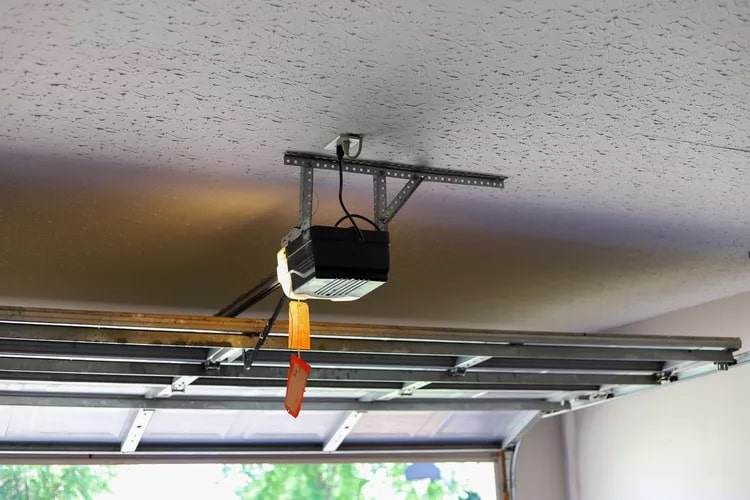Understanding the Difference Between Torsion and Extension Springs in 2024
The mechanics of springs play a vital function in numerous purposes, from on a regular basis home goods to advanced machinery. Understanding the differences between torsion and extension springs might help you select the right type in your particular wants.
Garage Door Troubleshooting Experts St. Albert
What Are Torsion Springs?
Torsion springs are designed to exert a torque or rotational force. They work by twisting, storing vitality in the coil as it turns around its axis. These springs are generally utilized in applications requiring managed rotational actions. For occasion, you'll find torsion springs in gadgets like clothespins and storage doorways, where resistance to wind or gravity is needed.
- Mechanism: Torsion springs store energy when they are twisted. The force exerted will increase as the spring is twisted further from its impartial position. Common Uses: Found in functions ranging from St. Albert's garage mechanisms to Spruce Grove’s industrial machines. Design Features: Typically, they include tightly wound coils round a strong center. This building allows them to resist constant twisting forces.
What Are Extension Springs?
Garage Door Parts and Repairs Nisku
Extension springs, distinct from torsion springs, are designed to absorb and store vitality when they are stretched. These springs provide resistance to pulling forces and return to their authentic form when the force is removed. They are sometimes present in functions requiring pulling or tension, corresponding to within the doors of certain appliances and other machinery.
- Mechanism: Extension springs operate by elongating. The more they are stretched, the extra force is exerted to return to their unique shape. Common Uses: Often utilized in Beaumont's automotive industry or in tools found in Fort Saskatchewan developments. Design Features: Typically have coils with hooks or loops at every end for safe attachment factors.
Key Differences Between Torsion and Extension Springs
Garage Door System Overhaul Fort Saskatchewan
Understanding the distinct traits of these two forms of springs may help you discern which one suits your software. Here are the first variations:
- Type of Force: Torsion springs generate a torque from rotational movement, while extension springs generate force when pulled aside. Shape and Design: Torsion springs are wound around a center axis, whereas extension springs are cylindrical and have hooks or loops at each ends. Applications: Torsion springs are best for purposes needing to resist rotational forces, such as in Leduc’s home goods, while extension springs excel in scenarios requiring tension, like in Spruce Grove's automotive components.
Affordable Emergency Garage Door Fixes Devon
Applications and Uses in Local Industries
Both torsion and extension springs find extensive use across completely different industries, including manufacturing, automotive, and home applications - Comprehensive Garage Door Maintenance Spruce Grove. Here’s how these springs are utilized in some localities:
Torsion Springs
- **Sherwood Park**: Often utilized in door hinge assemblies, permitting for smooth operations. - **Devon**: Integral in sports gear, similar to resistance bands and weights.Extension Springs
- **Morinville**: Common in garage doors, offering the mandatory tension for lifting doors efficiently. - **Ardrossan**: Frequently present in furniture mechanisms, making certain easy functioning of recliners and sofas.Garage Door Noise Reduction Solutions Devon
Each of those springs serves a particular purpose to boost product functionality and efficiency - https://zenwriting.net/tucaneqdbs/professional-overhead-door-repairs-edmonton Garage Door Torsion Spring Fixes Fort Saskatchewan. Understanding their roles helps producers design better merchandise tailor-made to fulfill consumer wants

Choosing the Right Spring for Your Application
When deciding between torsion and extension springs, consider the precise mechanical requirements of your application. Here are some tips to guide your selection course of:
Residential Garage Door Repairs Devon
- Identify the Forces Involved: Determine whether you need resistance to twisting (torsion) or pulling (extension). Evaluate Space Constraints: Analyze the working surroundings, as area could determine the form and measurement of the spring you need. Material Considerations: Choose the proper material primarily based on corrosion resistance and strength, which could be very important in areas like Fort Saskatchewan's industrial sectors.
Conclusion
Garage Door Weather Seal Repairs Spruce Grove
In abstract, the difference between torsion and extension springs lies in their primary operations and applications. Torsion springs excel in offering rotational resistance, making them good for applications that require torque, while extension springs are excellent for functions that necessitate tension and pulling. Whether you are in Stony Plain, Leduc, or another locale, understanding these differences will empower you to make knowledgeable decisions on your spring requirements. Don’t hesitate to consult with trade professionals to ensure the most effective fit in your particular needs!